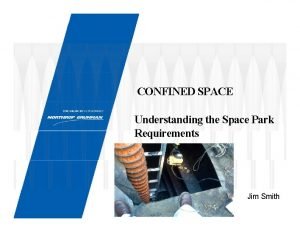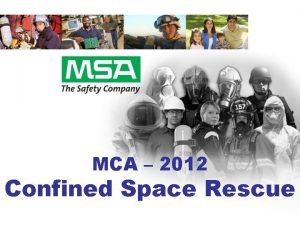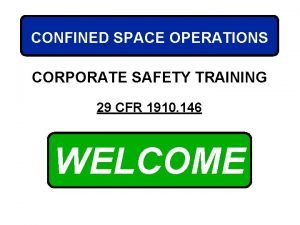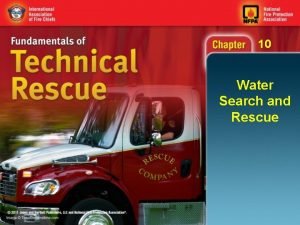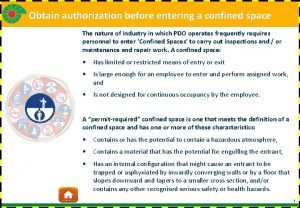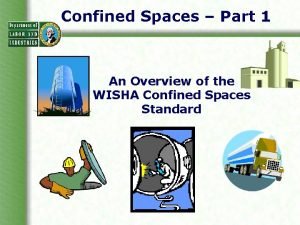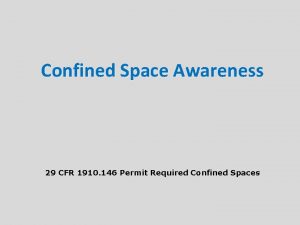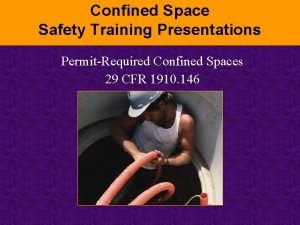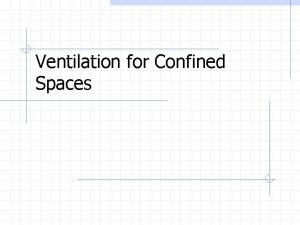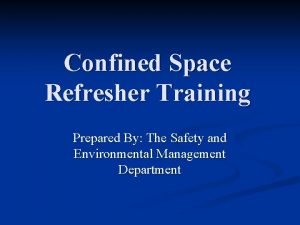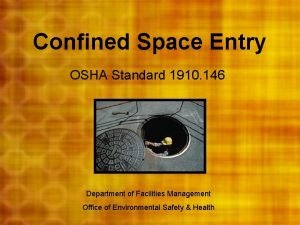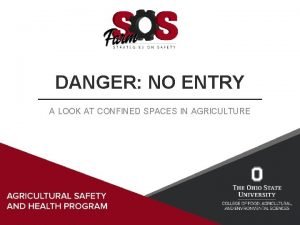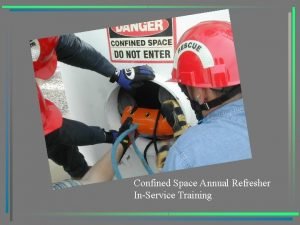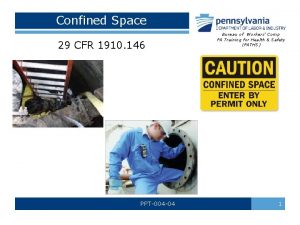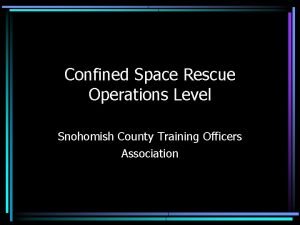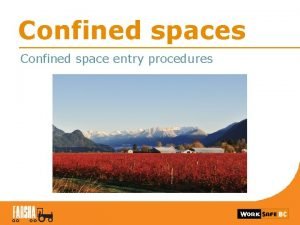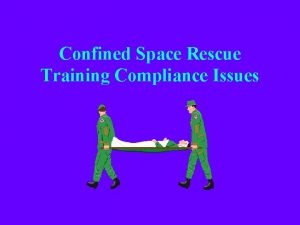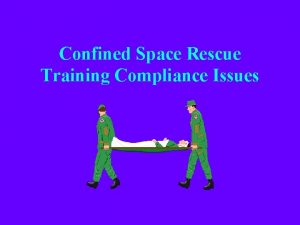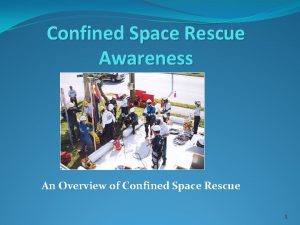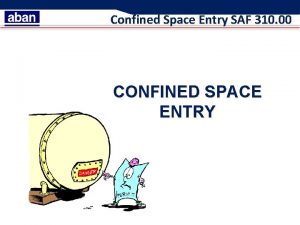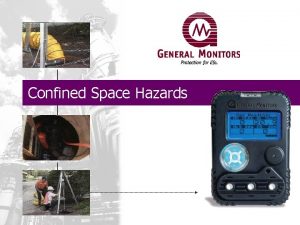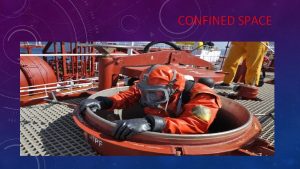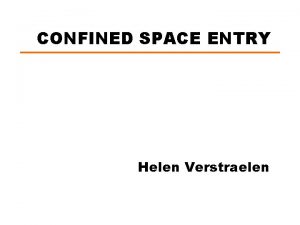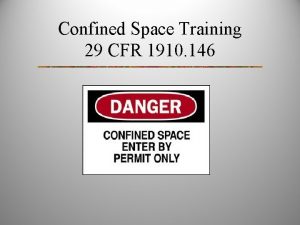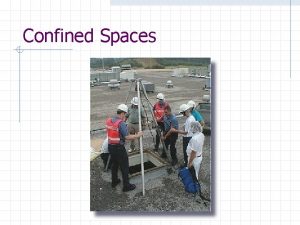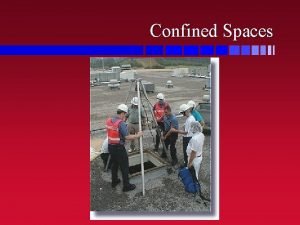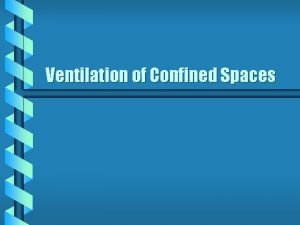Confined Space Rescue CONFINED SPACE RESCUE INSTRUCTIONAL GOAL




















- Slides: 20

Confined Space Rescue

CONFINED SPACE RESCUE INSTRUCTIONAL GOAL o The participant will understand the need for an efficient and coordinated response to a confined space rescue operations.

ENABLING OBJECTIVES o o o List five priorities for emergency rescue operations. Explain the three types of confined space rescue. Identify specific rescue situations requiring special consideration. Explain anchor and rigging systems. Describe basic hand signals used during confined space rescue operations. Described basic rescue safety rules.

Emergency Rescue The Change in Perspective o o o First priority is to keep all rescuers alive Do not substitute emotion for intellect Do not take shortcuts The person in charge may choose to isolate themselves Preplanning and training

Confined Space Rescue o Confined space emergencies are one of the leading causes of multiple deaths in the workplace o 60 percent of victims are would-be rescuers. o Regulation mandates an employer ensures the availability of rescue services prior to space entry. o The rescue team may be from within the plant or from an outside agency.

Confined Space Rescue o Rescue team is trained to perform the assigned rescue functions and has received the training required for authorized entrants. o Rescue teams should practice making permit space rescues at least once every 12 months by means of simulated rescue operations.

Confined Space Rescue o Employer shall have access to all permit spaces so the rescue service can develop rescue plans and practice operations. o The employer shall also evaluate the response capabilities and training of the off-site response team. (Appendix F to 1910. 146)

Three Types of Rescue o o o Self-rescue Non-entry rescue - external Entry rescue - internal

Self-Rescue Entrant is capable of recognizing a hazard and is able to exit from the space with no assistance.

Non-Entry Rescue - external o Rescue performed from outside the space. o Prior to entry, retrieval systems and body harnesses should be in place.

Entry Rescue - internal Entry rescue is clearly the form of rescue that presents the greatest risk Entry rescues should be avoided whenever possible Entry rescue requires a considerable amount of equipment

Specific Rescue Problems o o o Vertical entry into tanks and vessels Dikes or vertical walls Manholes

Anchor and Rigging Systems “Anchor” means to secure ropes and equipment of the rescue system to something that is solid and will not fail under the stress of loading. “Rigging” is the system of rescue ropes and hardware attached to the anchor system.

Anchor Rigging o o A tensionless tie-off utilizes the friction generated by coils of rope wrapped around the anchor as a means of anchoring a rope. A 4: 1 tensionless anchor requires a minimum of three (3) wraps of rope around an anchor that is at least four (4) times the diameter of the rope.

Anchor Rigging o All other rigging must have a backup rig. o If an anchor point has sharp edges, rigging should be padded.

Rigging Cautions o o o o Do not run nylon over nylon rigging. Pad sharp edges as any bend under 4: 1 weakens the rope Avoid hard linking, that is, three (3) or more carabineers linked together. Double check by sight and touch. Keep it simple. A pulley in rigging systems should always be backed up. Angles greater than 120° cause extra load on anchors.

Belaying, Lowering, and Raising Systems o o o Purpose is to arrest the fall of the load should failure occur in the working line. Working line and belay line should be established at the same time. Weight of load determines relationship between working line, belay and anchor.

Working Line - Lowering o o o Performed when rescuers are sent to retrieve a victim Must be done in a deliberate and controlled manner Figure – 8 or Rescue – 8 system Rappel rack Tandem Prusik belay

Raising Systems o o Both rescuers and victims must be raised Winch devices Rope rescue raising systems Mechanical advantage system used to reduce the workload on topside rescuers

Mechanical Advantage Systems o Simple n o Series of ropes and pulleys that begin at the anchor or the load and terminates in the hands of those doing the hauling. Compound n Simple mechanical advantage system pulling on a simple mechanical advantage system.
 Confined space rescue equipment
Confined space rescue equipment Confined space rescue equipment
Confined space rescue equipment Confined space rescue equipment
Confined space rescue equipment Confined space rescue equipment
Confined space rescue equipment Confined space presentation
Confined space presentation Reach throw wade row swim tow
Reach throw wade row swim tow Goal analysis instructional design
Goal analysis instructional design Confined space supervisor course
Confined space supervisor course Lel meter readings
Lel meter readings Obtain authorization before entering a confined space
Obtain authorization before entering a confined space Confined space gas limits
Confined space gas limits 1910-146
1910-146 Confined space presentation
Confined space presentation 1910 confined space
1910 confined space Confined space refresher training
Confined space refresher training 1910-146
1910-146 Agricultural confined space training
Agricultural confined space training 1926 confined space
1926 confined space Confined space refresher training
Confined space refresher training Confined space training ppt
Confined space training ppt Saba confined space
Saba confined space
